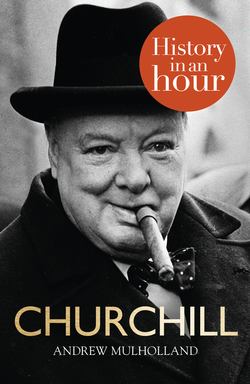Читать книгу Churchill: History in an Hour - Andrew Mulholland - Страница 8
The First World War: 1914–1918
ОглавлениеAntwerp
By early October 1914, the Allies were desperately attempting to halt Germany’s advance into Belgium and France. At their extreme left flank lay the port of Antwerp, where a small force, consisting largely of British sailors, clung on. From there, Winston Churchill telegrammed the Prime Minister with a request that he be relieved of his political duties. He wanted to take up a military command. When Asquith read the telegram out to his Cabinet, there were hoots of laughter.
It was typical of Churchill’s boyish enthusiasm for war. All of that was to change over the next four years. He would soon feel personally responsible for 40,000 Allied deaths, attempt to assuage his guilt through courage in the trenches, and end the conflict as one of the most effective ministers in the government. As ever with Churchill, his career during this period was never dull or without controversy.
He had travelled to Antwerp to assess matters on the ground. The Naval Division which did most of the fighting was his own personal project – not much more than a pretext for having some influence over the land war. Bizarrely, Britain’s Royal Navy also had a detachment of armoured cars operating in the sector. Notwithstanding Churchill’s private army and personal intervention, the port shortly fell to the advancing Germans. It did not reflect well on Churchill, although in fairness his pleas for reinforcements had fallen on deaf ears. He simply could not resist meddling in detailed decision-making.
Naval power: with John ‘Jacky’ Fisher, Churchill had helped prepare the Royal Navy for the First World War. HMS Queen Elizabeth, 1915.
Back in Britain, Clementine gave birth to Sarah, their third child, while Winston was still in Belgium. Her confinement had not prevented her from issuing stern warnings to her husband about interference. She told him that a hands-on approach would mean he shouldered the blame for every naval setback. The navy had implemented a long-range blockade of Germany from the first day of the war, a strategy for which Churchill had pressed. This would eventually become a crippling economic stranglehold – but it was the battles that made the headlines. As far as the public was concerned, the naval picture was bleak. Churchill had bragged about beating up the German fleet the very day before it sortied to deliver a sharp defeat to Britain, at the first Battle of Dogger Bank. There had been a similar reverse at the Battle of the Coronel, offset only by a minor British success off the Falklands. Scarborough was shelled by German warships. While the navy was quietly throttling Germany, Churchill was taking the blame for what was seen as a failing strategy.
Gallipoli
He was itching for more decisive action. The idea for the Gallipoli (Dardanelles) campaign, for which he was to bear so much criticism, was not actually his. In addition, the notion that the British and French navies could storm the strait alone was one he had opposed from the outset. It was Kitchener, the Minister for War, who had championed the scheme, and the admirals who had told him that the navy could go it alone. The idea was to seize the narrow channel separating Europe from Asia, capture Constantinople (Istanbul) and knock Turkey out of the war. While the Allied navies failed to secure the strait, the Turks had ample time to fortify the Gallipoli peninsula. The subsequent land invasion of this area became ‘Plan B’ in April 1915. This, too, was a disaster.
